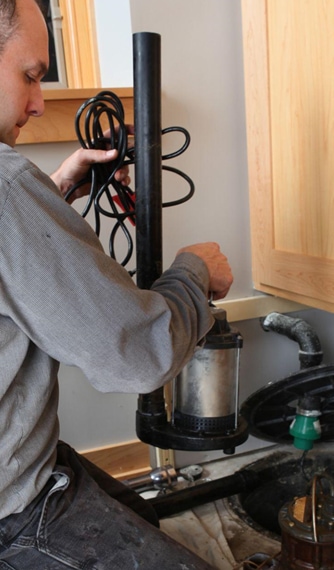We've discovered this great article pertaining to How To Effectively Clean A Sump Pump directly below on the net and thought it made good sense to write about it with you on this site.

Sump pumps are important parts in numerous homes, specifically in areas susceptible to flooding or extreme wetness. They aid protect against water damages by efficiently removing excess water from cellars or crawl spaces. However, like any other appliance, sump pumps call for regular maintenance to ensure they operate properly when required one of the most. Cleaning your sump pump is an essential part of its maintenance, and recognizing exactly how to do it properly can conserve you from pricey repair services and prospective disasters.
Introduction
Keeping a tidy sump pump is important for its proper performance and durability. Neglecting this crucial task can result in obstructions, malfunctions, and inevitably, water damage to your residential or commercial property. Consequently, learning exactly how to cleanse a sump pump is important for home owners that count on these tools to maintain their cellars completely dry and secured.
Comprehending the Sump Pump
Prior to diving right into the cleansing process, it's necessary to have a standard understanding of just how a sump pump functions. Usually mounted in a pit or basin listed below the basement flooring, a sump pump contains numerous vital parts, consisting of a pump, a float switch, and a discharge pipe. When water accumulates in the pit, the float switch turns on the pump, which then pumps the water out through the discharge pipeline, away from the structure's structure.
Signs of a Dirty Sump Pump
Recognizing when your sump pump needs cleansing is vital for avoiding possible malfunctions. Some usual signs that show a dirty sump pump include odd sounds during operation, lowered water flow, and visible particles in the pit. If you see any of these signs, it's vital to cleanse your sump pump promptly to prevent any type of more concerns.
Planning for Cleaning
Before you begin cleaning your sump pump, it's important to take some safety preventative measures. Beginning by turning off the power to the pump to stay clear of any electrical accidents. Furthermore, put on appropriate protective gear, such as gloves and goggles, to protect on your own from dust, debris, and prospective pathogens.
Detailed Guide to Cleaning Up a Sump Pump
Shutting down the Power
Begin by detaching the power supply to the sump pump to prevent any kind of mishaps while cleaning.
Removing Particles and Dirt
Make use of a container or an inside story to eliminate any kind of visible particles, dust, or sediment from the sump pit. Dispose of the debris properly to avoid it from obstructing the pump or the discharge pipe.
Cleaning up the Pump and Drift Switch
Once the pit is free from particles, very carefully get rid of the pump from the pit. Inspect the pump and the float switch for any type of indications of damages or wear. Make use of a soft brush or towel to clean the surfaces and remove any kind of gathered crud.
Purging the System
After cleansing the pump and float button, purge the sump pit with tidy water to eliminate any type of staying dust or sediment. This will certainly assist ensure that the pump operates smoothly and effectively.
Looking For Appropriate Performance
Prior to re-installing the pump, perform a fast examination to make sure that the float button turns on the pump correctly. Put some water into the sump pit and observe the pump's procedure. If whatever is functioning properly, you can reconstruct the pump and reconnect the power supply.
Maintenance Tips to Maintain Your Sump Pump Clean
In addition to routine cleaning, there are several maintenance suggestions you can comply with to keep your sump pump in ideal problem:
Conclusion
Cleansing your sump pump is a vital facet of its upkeep and guarantees that it runs effectively when you require it one of the most. By complying with the actions laid out in this guide and including regular upkeep right into your routine, you can expand the life-span of your sump pump and shield your home from water damages.
6 STEPS ON HOW TO CLEAN A SUMP PUMP PROPERLY
UNDERSTANDING SUMP PUMPS
Your sump pump plays a crucial role in protecting your home by managing and removing excess water. It primarily functions as a “shield”, guarding your basement against the damaging effects of water accumulation. The pump is housed in a sump pit in the lowest part of your basement, and its job is to pump out any water that collects there.
During heavy rainfalls or when snow melts rapidly, water can infiltrate your basement, posing potential risks like flooding, structural damage, and harmful mold growth. Here, the sump pump springs into action, pumping out the intruding water and directing it away from your home.
SAFETY FIRST
Before cleaning, remember to prioritize safety. Disconnect the sump pump from the power source to prevent any accidental electric shocks. Also, wear sturdy gloves to protect your hands from any sharp or dirty components within the pump.
REMOVE THE SUMP PUMP
After ensuring your safety, the next step is to remove the sump pump from its pit. Doing this might require careful maneuvering as you don’t want to damage any pump components. Once removed, clean the sump pit to remove any accumulated debris or sludge.
INSPECT THE PUMP
Inspect the pump for any visible signs of wear or damage. Check the power cord, float switch, and impeller housing. If any components look worn out or damaged, consider replacing them to ensure optimal performance.
CLEAN THE PUMP
Thoroughly clean the pump with warm, soapy water. Make sure to rid it of any dirt, gravel, or other debris that might impede its performance. You can use a toothbrush to clean the small, hard-to-reach parts of the pump.
REINSTALL THE SUMP PUMP
Reinstall the pump into the sump pit Make sure it’s positioned correctly to remove the water effectively Once it’s back in place, reconnect it to the power source TEST THE PUMP
Finally, pour some water into the pit to ensure the pump works correctly. It should start automatically and begin pumping out the water; if it doesn’t, check the power source and the positioning of the pump.
Remember, while cleaning your sump pump is an essential part of home maintenance, hiring a professional plumber for a thorough inspection and cleaning at least once a year is also important. This will ensure that your pump is in optimal condition, ready to protect your home from potential water damage.
BEST PRACTICES FOR CLEANING SUMP PUMP DISCHARGE PIPES
Regular Inspection: Regularly inspect your discharge pipes, especially during heavy rainfall or snowmelt periods. Look for any signs of blockage or damage. Early detection of problems can prevent serious issues down the line. Periodic Cleaning: Over time, sediment and debris can accumulate in the discharge pipes, impeding the flow of water. Regular cleaning helps keep the pipes clear and functioning efficiently. You can use a high-pressure water jet to effectively clean the pipes. Insulation During Winter: In colder climates, discharge pipes can freeze, blocking the outflow of water. Protect your discharge pipes from freezing temperatures by insulating them with foam pipe insulation. This will ensure the sump pump can continue to discharge water even in freezing conditions. Proper Positioning: The discharge pipe should be positioned to direct water away from your home’s foundation. Improper positioning can lead to water seeping back into the basement. Ensure the pipe is long enough and angled correctly. Installation of a Check Valve: A check valve prevents water from flowing back into your sump pit after the pump has pushed it out. Installing a check valve helps maintain the efficiency of your sump pump and reduces the risk of flooding. Minimize Pipe Turns: Every curve or turn in the discharge pipe can decrease the efficiency of water flow. By minimizing turns and bends in your discharge pipe, you can increase the efficiency of your sump pump. https://www.fullspeedplumbing.com/how-to-clean-a-sump-pump-properly9999/

Do you enjoy reading about Steps to Cleaning Your Sump Pump Properly? Put feedback directly below. We would be delighted to hear your suggestions about this review. In hopes that you visit us again in the future. Make sure you pause to share this blog post if you enjoyed reading it. Thanks a lot for your time spent reading it.
Suggested Site